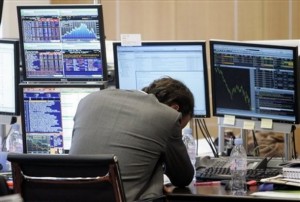
Whenever you hear someone talking about the beverage industry, you immediately think Coca-Cola and PepsiCo. But what about Dr. Pepper Snapple Group? Over the past 20 years this company has built itself into a smaller beverage powerhouse via a series of acquisitions beyond the beloved Dr. Pepper and Snapple Iced Tea. It also owns Canada Dry, 7UP, A&W, Sunkist, and a number of others. The company’s stock is currently up 30% in the past 12 months and pays a very handsome dividend. The company beat expected earnings when it reported early last week. So I want to dig deeper into this companies’ prospects and look at how management is planning for a bright future.
The beverage industry is a particularly hard one to compete in. A certain Mayor has made this sector even more competitive due to recent activities. Consumers have been driven away from these beverages because of the negative publicity that high sugar beverages have received. Dr. Pepper Snapple Group has been developing new products to take up aisle space. About a year ago Dr. Pepper 10 (only 10 calories) was launched in efforts to bring back those lost customers and show them that this company is offering more choices. Much of Dr. Pepper’s business is done in the United States due to the restrictions overseas. Some of these brands would be gigantic if they were to be sold overseas. However, although they have not begun to do so yet, the company can sell a few of its non-carbonated products in the Asia-Pacific area. The company has done a stellar job in Latin America making it a gold mine for profits. But what makes this company’s future so bright, is that it is more focused on North America. Even though the behemoths out there have slowed down (Cola fatigue) Dr. Pepper Snapple Group still has many opportunities with distribution availability.
Let’s look at some brands that standout well while others standout badly. How does management plan to turn one around and keep one going up? Motts Apple Sauce had a good year even with the cold weather this year and the warm weather last year. This caused frost which ended up killing a large amount of the apple trees. Management prepared for this issue and overstocked its apple supply so it could continue to distribute to consumers. As a result Motts Q1 earnings did very well. Hawaiian Punch did not do well in Q1 due to its poor nutritional value. The company responded by doing some innovation to reduce the sugar content by 60% and add vitamins A, C, D, and E. Despite the criticism and low earnings, the company is reluctant to give up on this brand that has been around since 1934. How about some wildcard brands that are very well known but aren’t thought of as Dr. Pepper Snapple Group? Brands such as Schweepes, IBC, Mr. & Mrs. T, Stewart’s, Yoohoo and a lot more. These brands provide a very colorful portfolio and gives this company a lot of room to play in. The company has been able to make a huge amount of money without a lot of growth. If the company can increase growth, it is going straight to the bottom line which is very shareholder friendly.
In conclusion, can Dr. Pepper Snapple Group run with the big boys such as Coca-Cola and PepsiCo? Or, will this company be stuck in neutral for the years ahead? Where can the company add more value and keep expanding? From your own personal experience with beverage consumption, where do you think this company will be in the future?
http://www.drpeppersnapplegroup.com/
http://rt.com/usa/chemical-drink-bvo-gatorade-605/
http://beta.fool.com/jharry1/2013/05/10/dr-pepper-snapple-group-is-gearing-up-for-growth/33580/
http://laurennp.files.wordpress.com/2009/05/salespromotion_hawaiian-punch.pdf
http://thedailystar.com/localnews/x994535085/Drought-frost-put-squeeze-on-local-orchards/print
http://www.marketwatch.com/story/dr-pepper-snapple-q1-profit-up-sales-volume-down-2013-04-24
